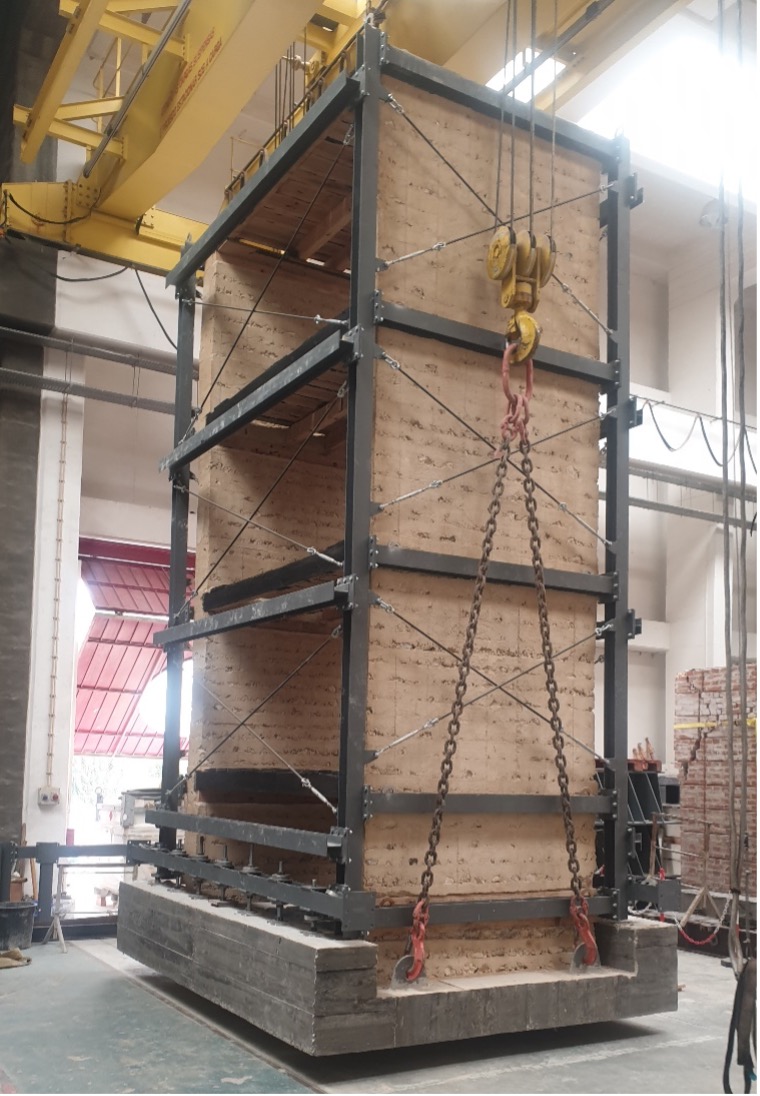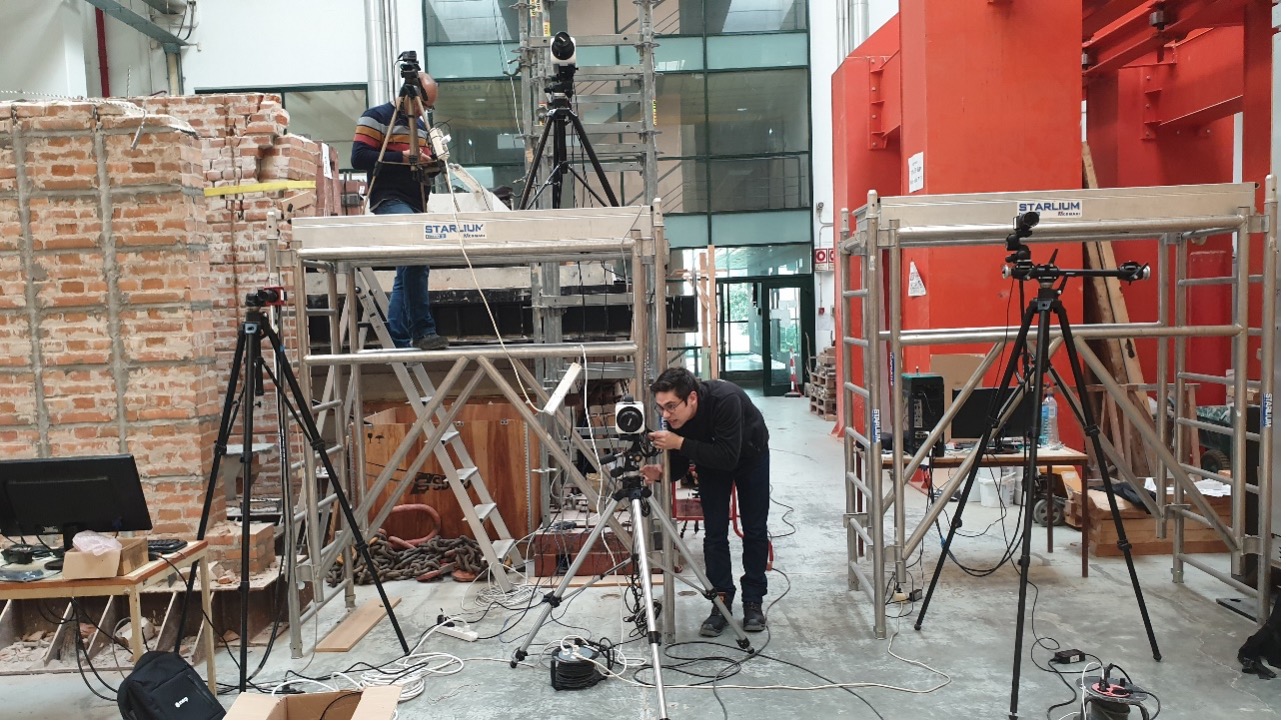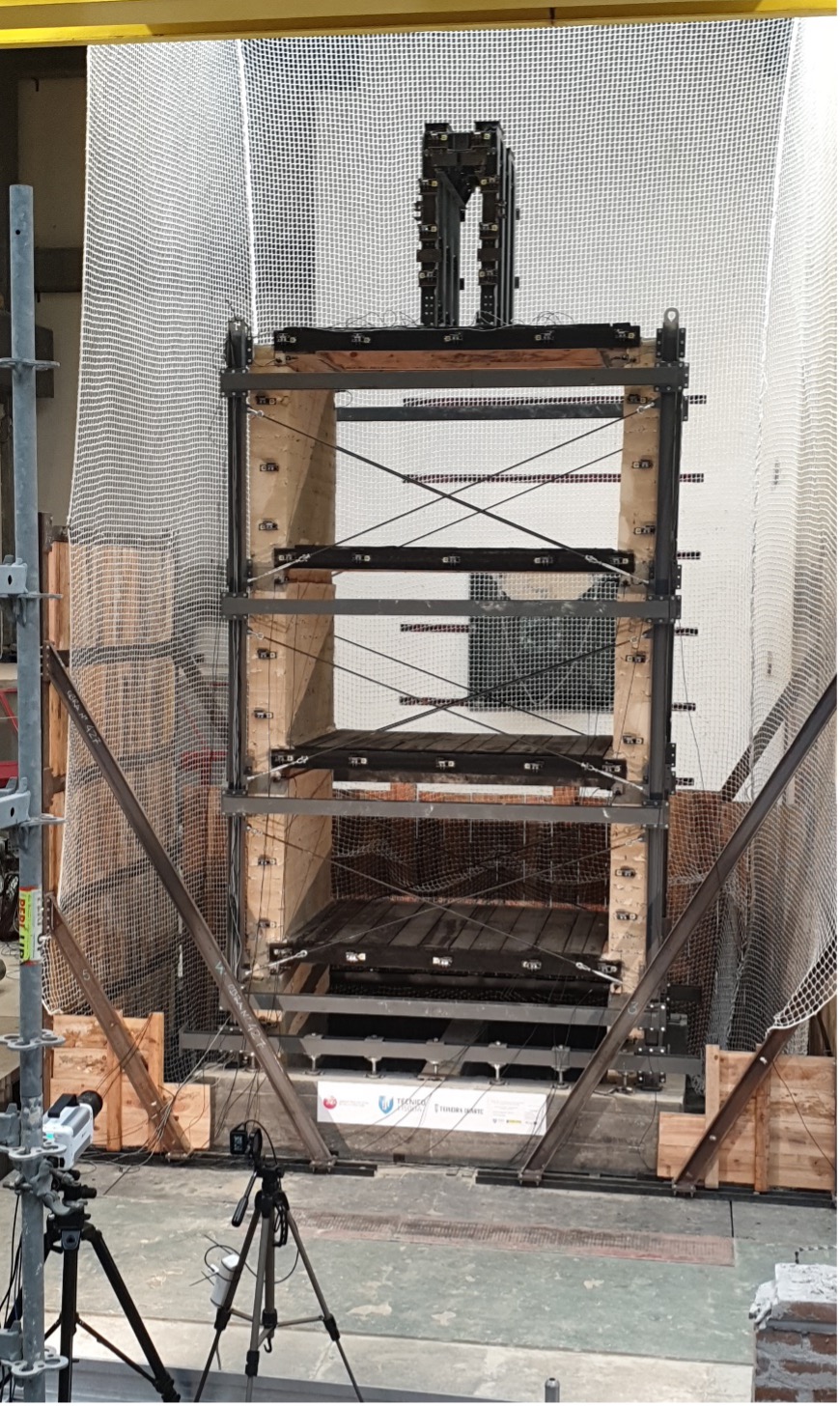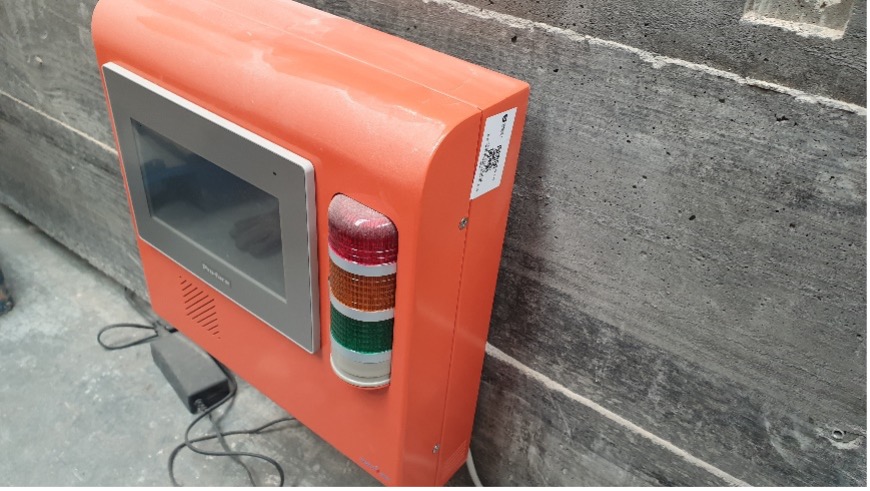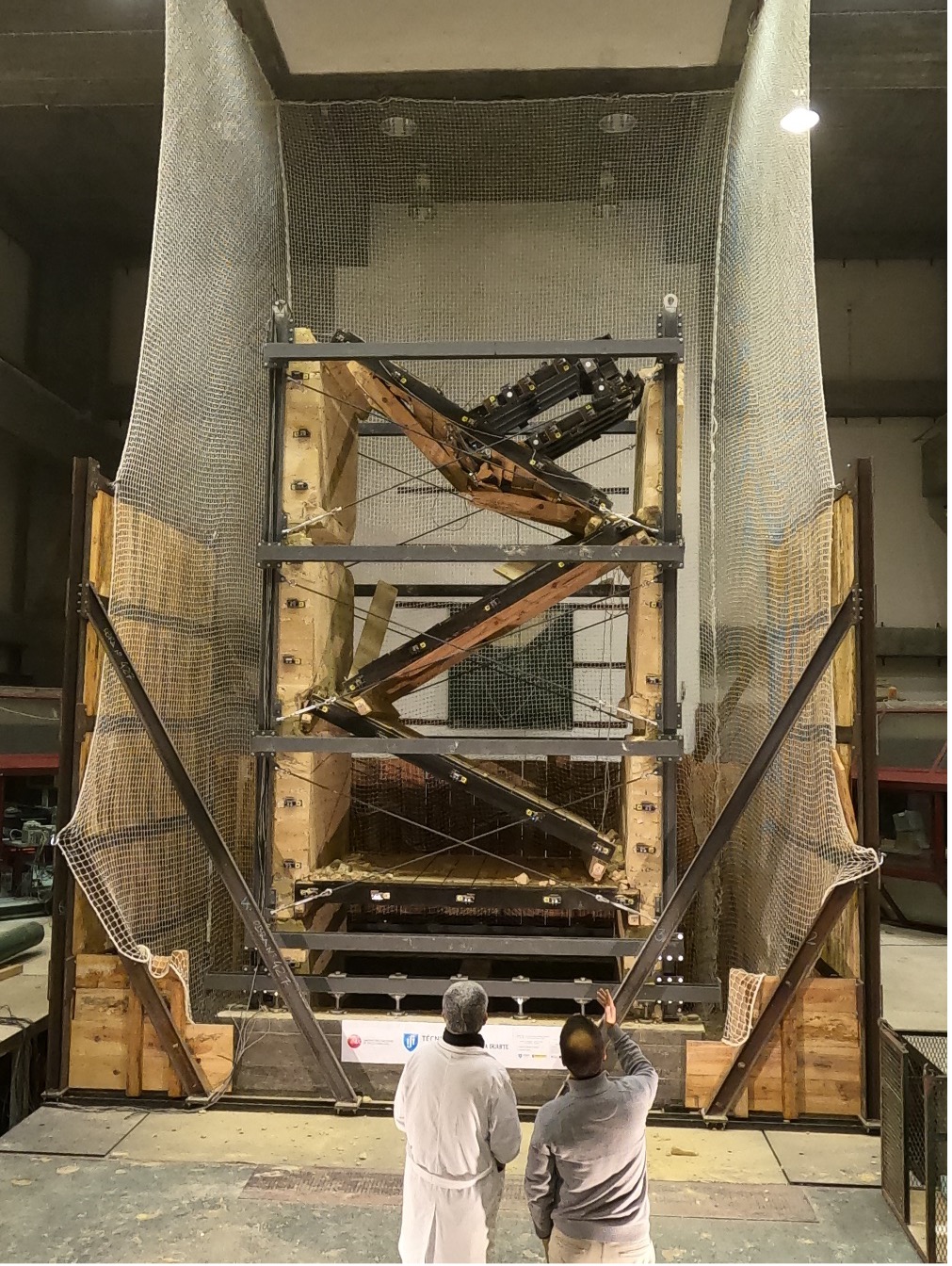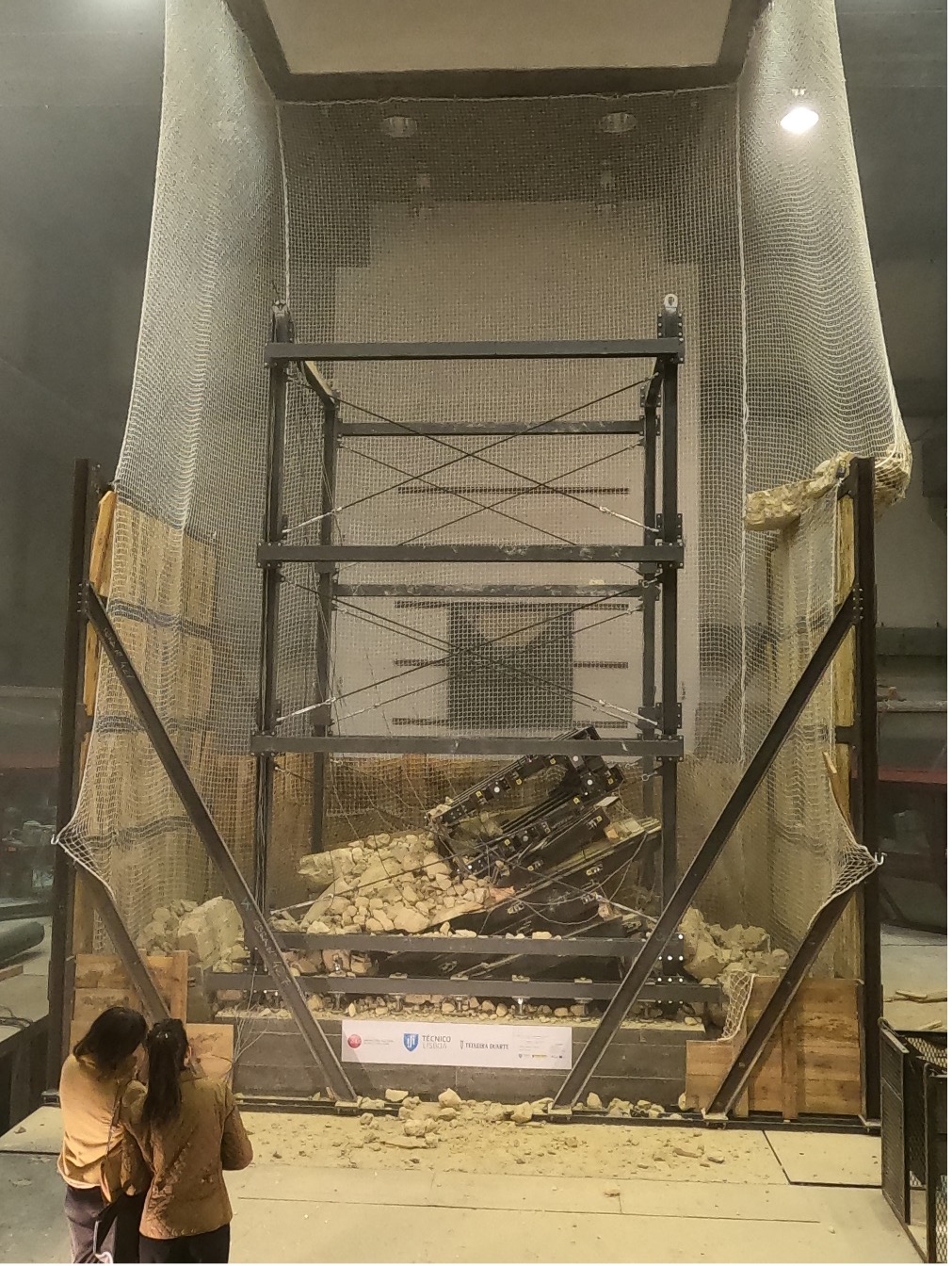Experimental Studies
The SHETER project involved the execution of highly complex experimental tests, of which the following stand out:
Static tests for evaluating the shelter's structural resistance:
Two critical scenarios were considered - collapse with the shelter in a vertical position and collapse with the shelter in an inclined position. A series of tests were first carried out to evaluate the structural behavior of the initially conceived solution. Based on the obtained results, the structure's configuration was optimized, new prototypes were manufactured, and the testing campaign was repeated. These tests were performed at the National Laboratory of Civil Engineering.
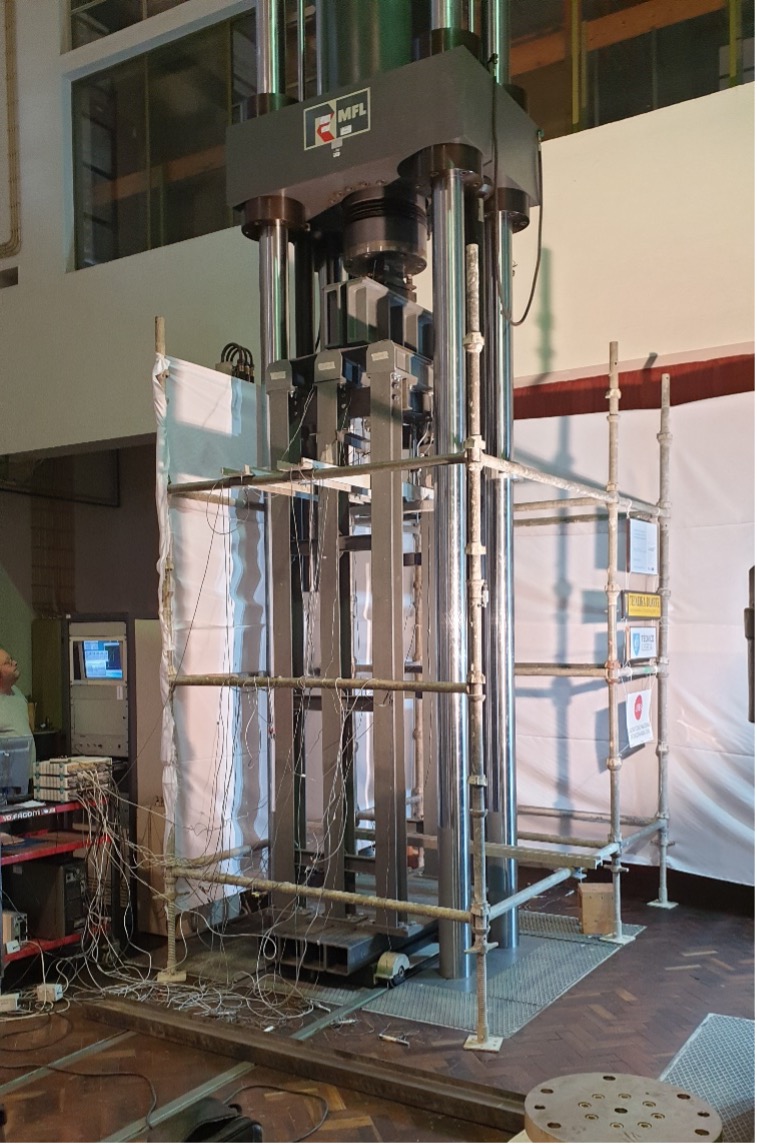
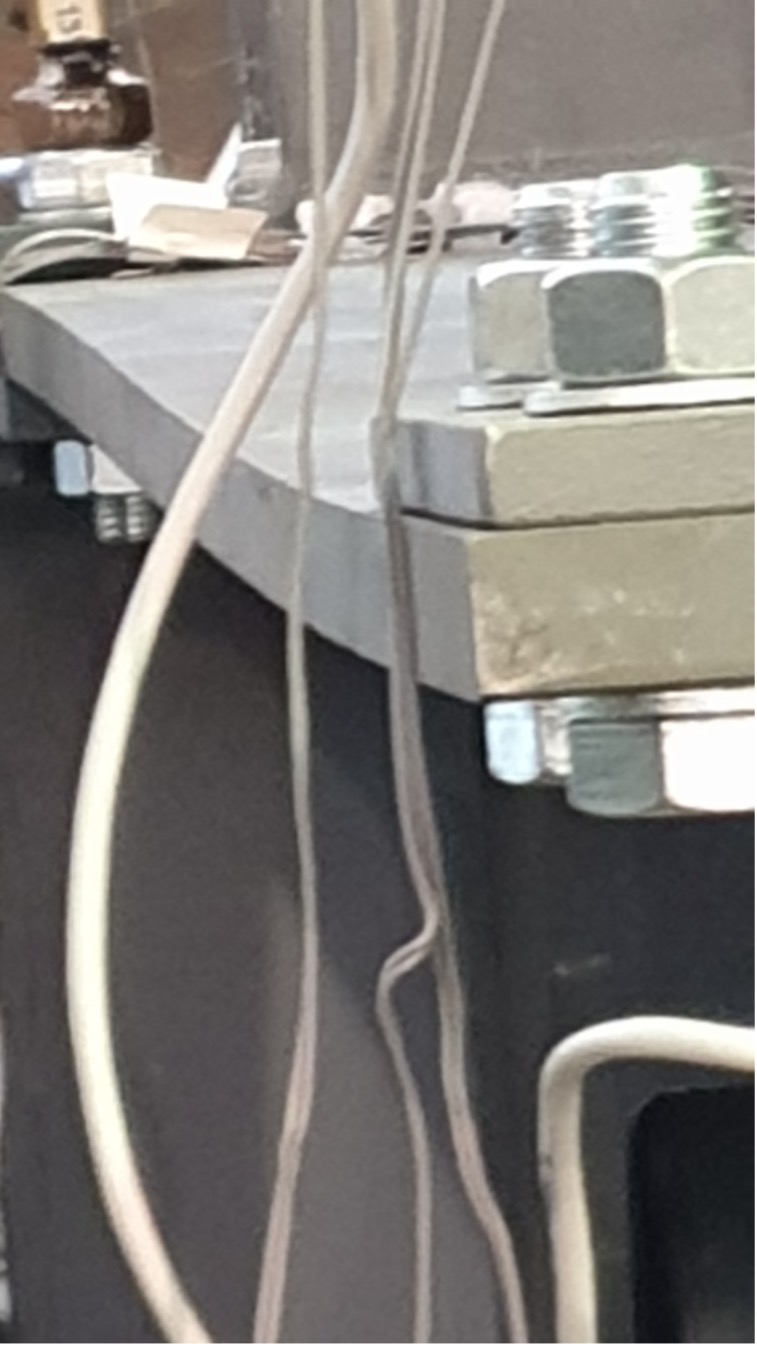
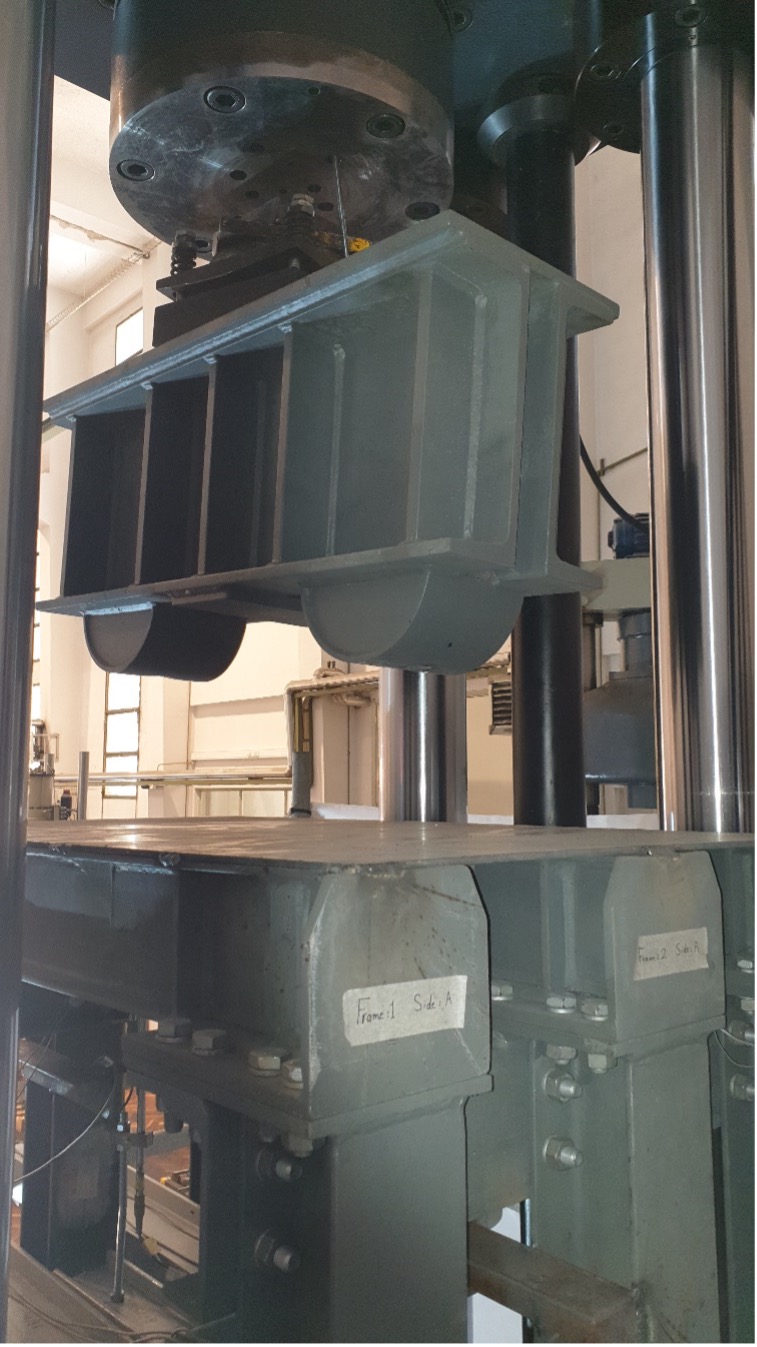
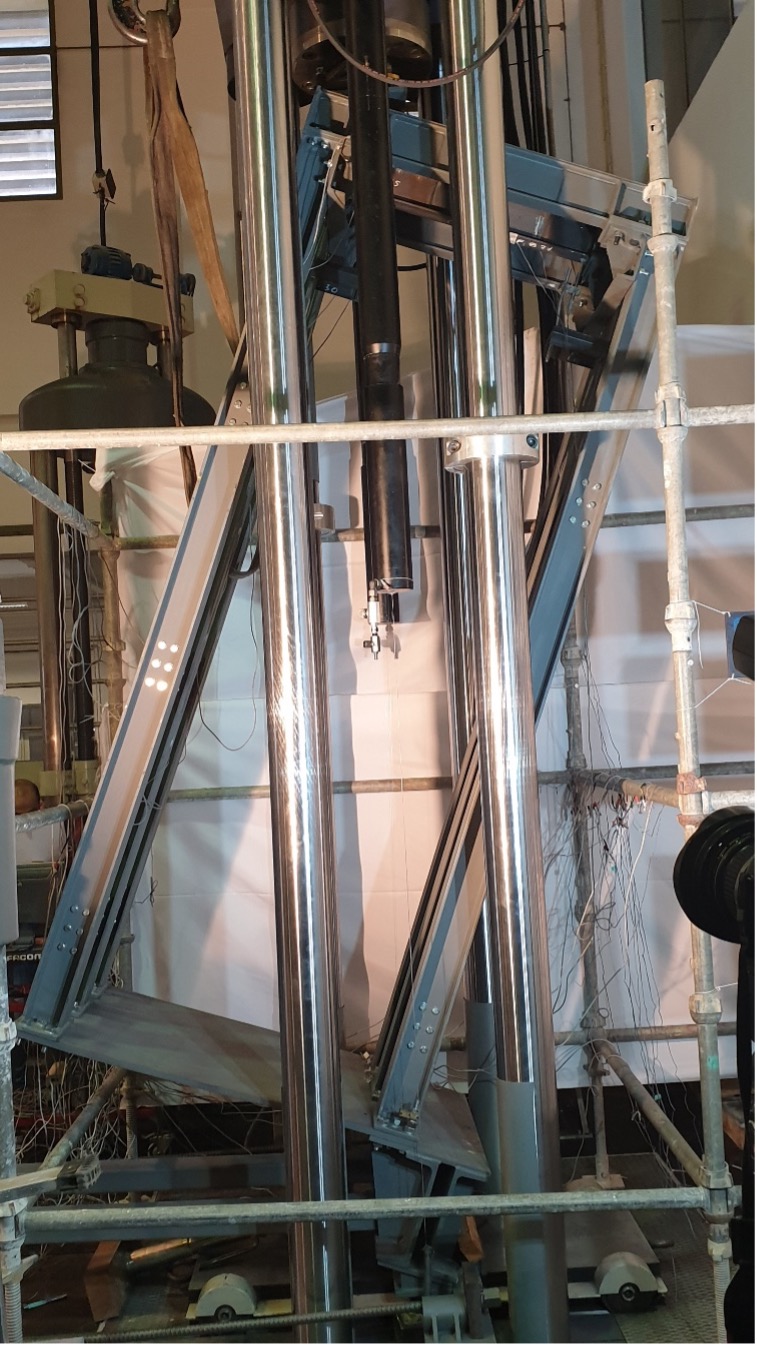
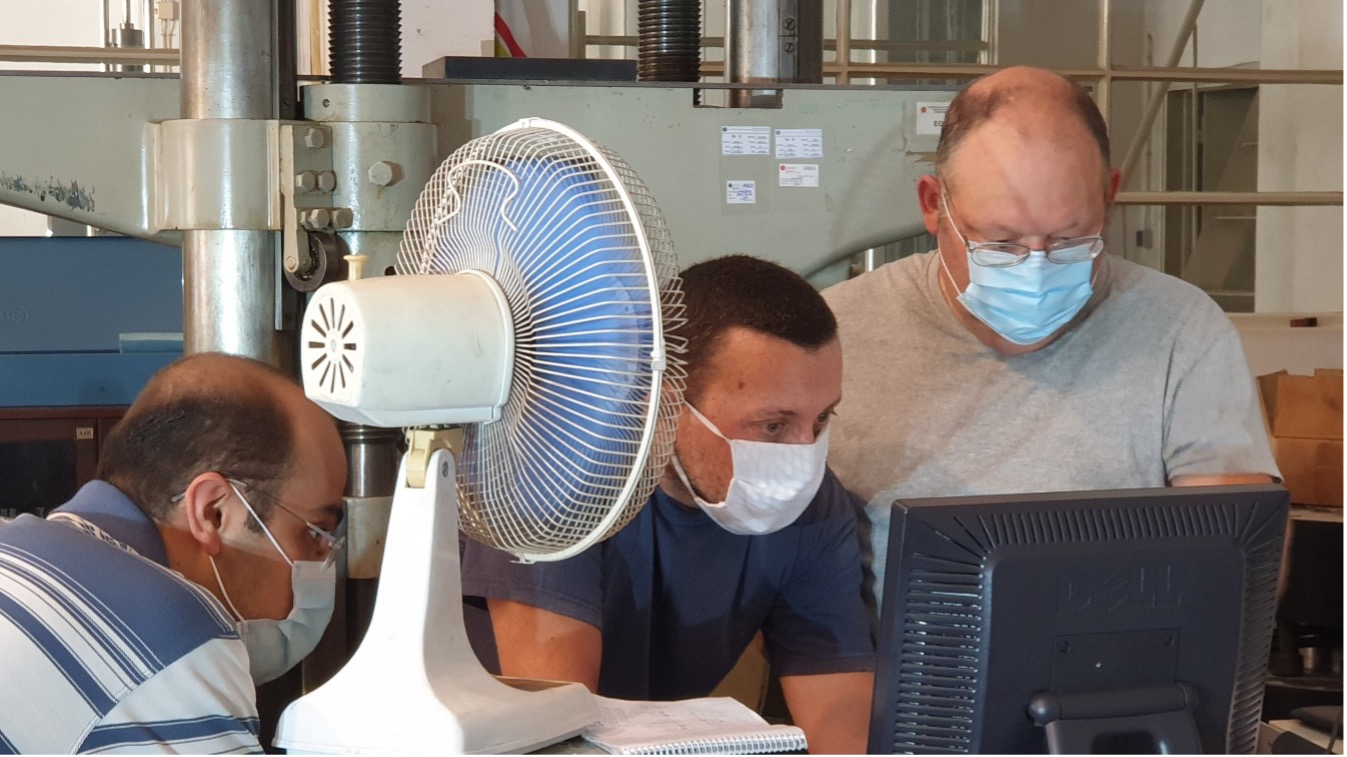
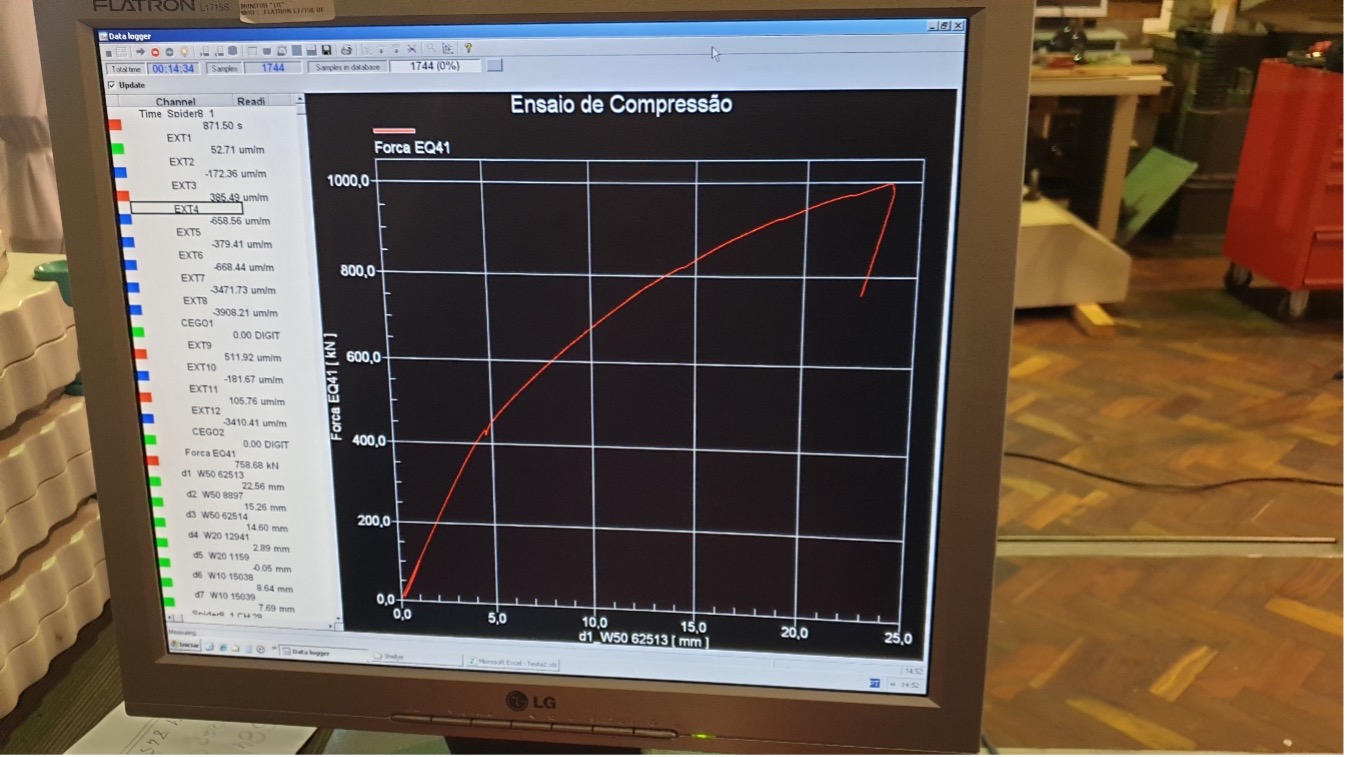
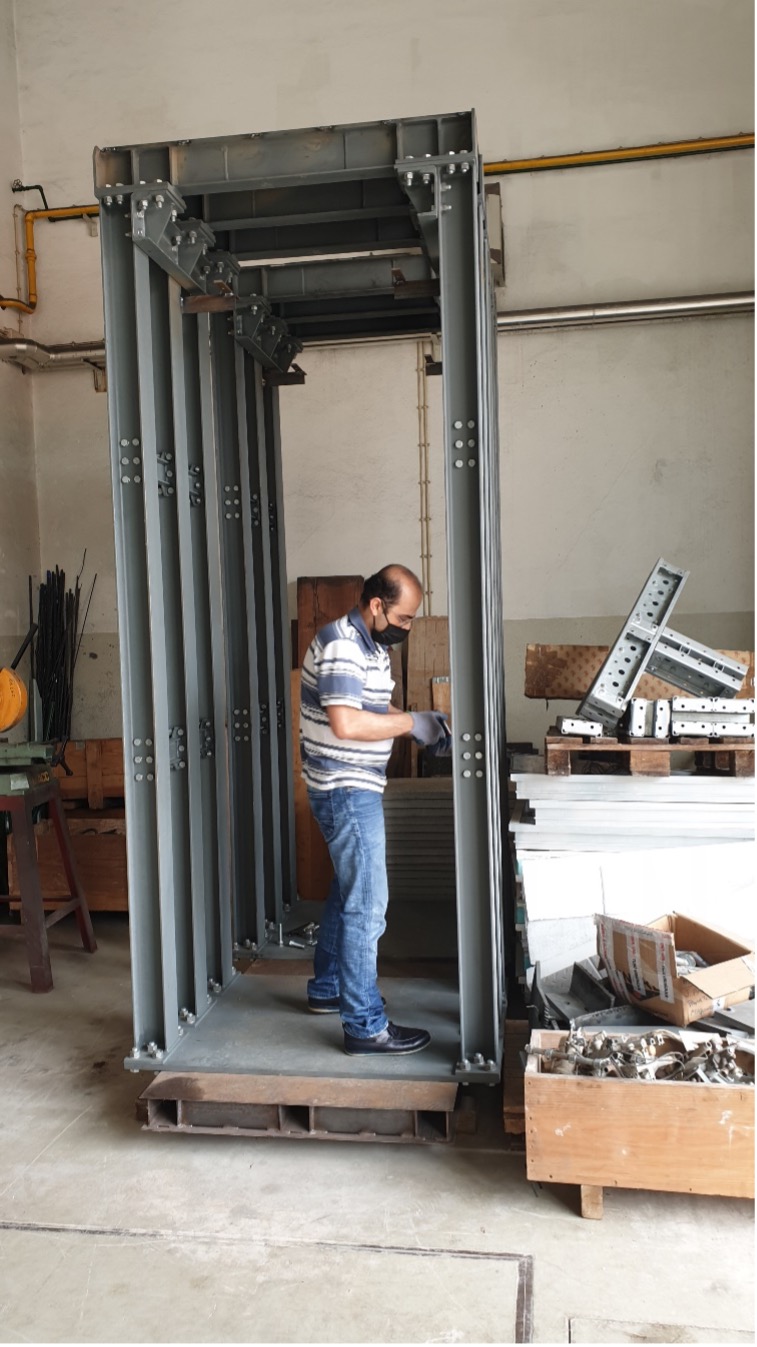
Free fall and impact tests:
Free fall tests were carried out to assess the impact effects on the ground that occur when the building collapses. For this purpose, a partial model of the shelter at real scale was built, in which a crash test dummy was installed and seated on a prototype of the developed safety seat. The tests allowed evaluating the impact's effect on the human body and the effectiveness of the safety seat damping system. These tests were performed at the operational site of Teixeira Duarte in Montijo.

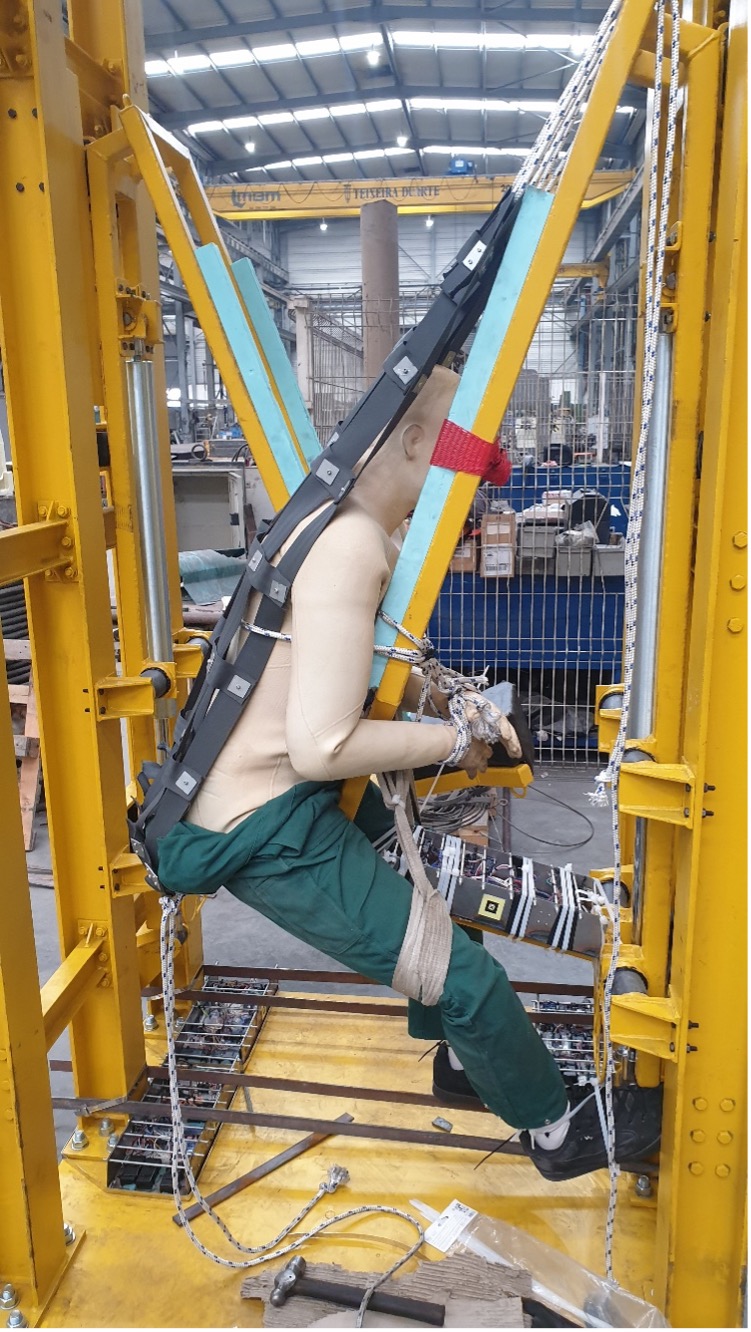




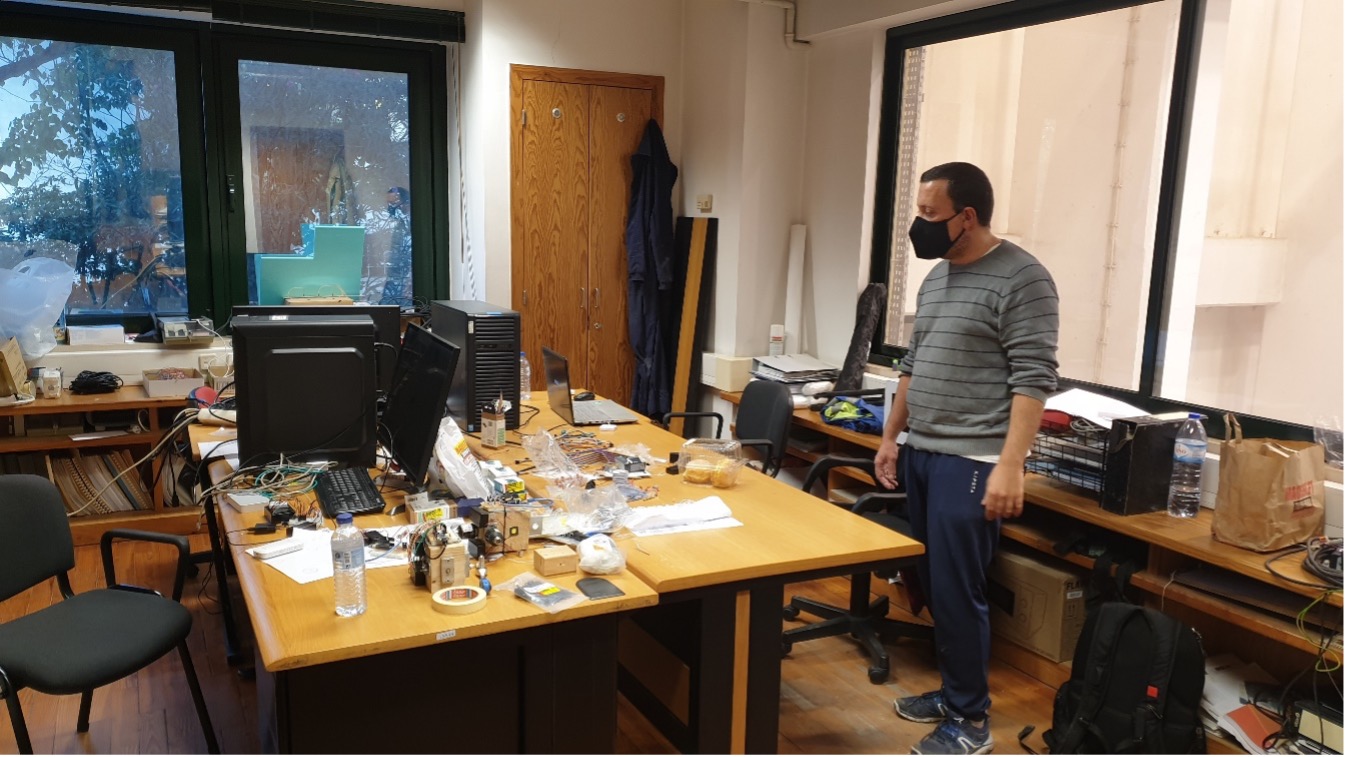
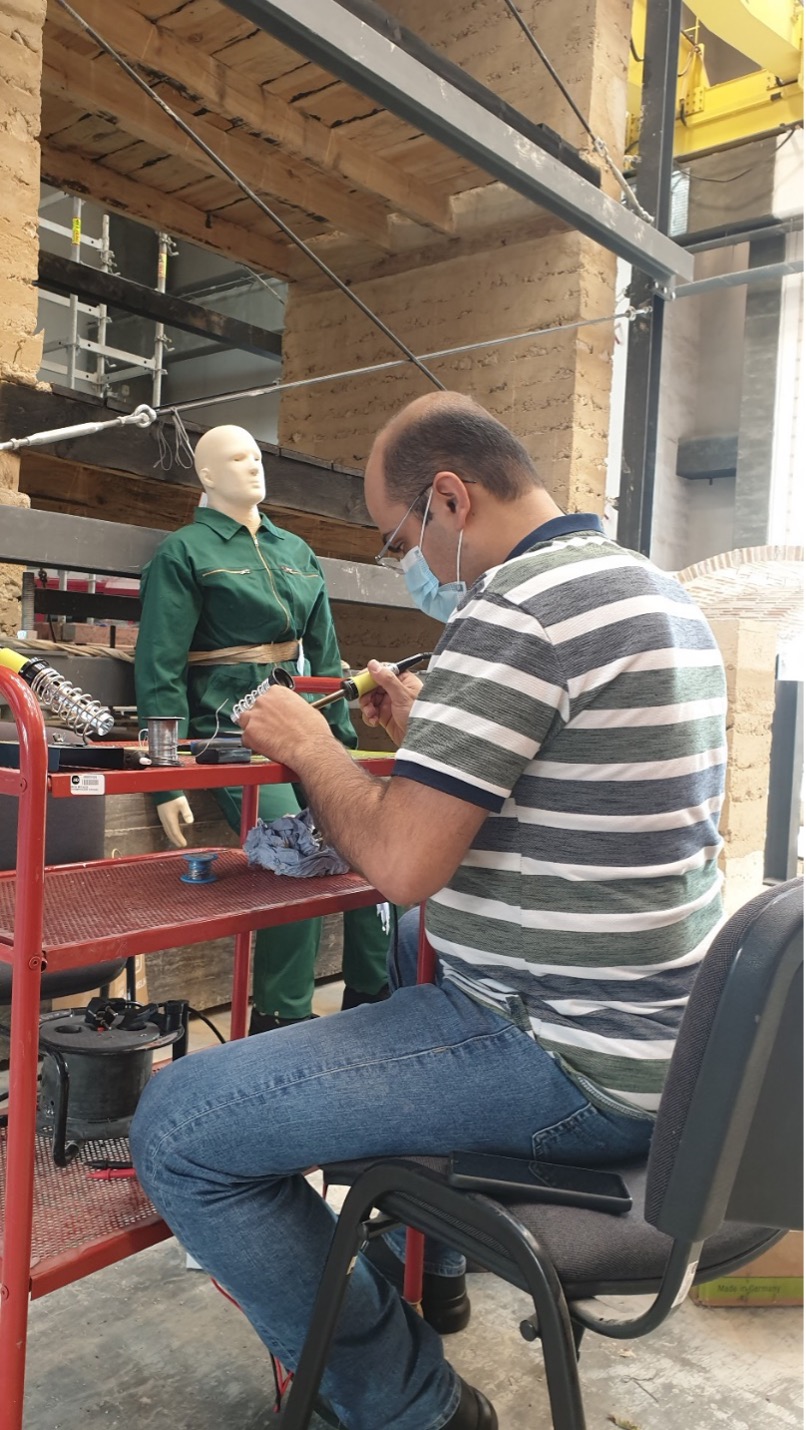
Seismic table tests of a masonry building model:
Seismic table tests were performed on a model of a building with a shelter installed on the top floor. A 1/2 scale building was constructed with ordinary stone masonry walls and floors with wooden joists. The test's objective was to study the shelter's behavior in the context of a collapsing building. First, tests were conducted to dynamically characterize the building's structure, and then tests were carried out with increasing base accelerations until the building's collapse occurred. These tests were performed at the National Laboratory of Civil Engineering.
